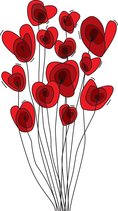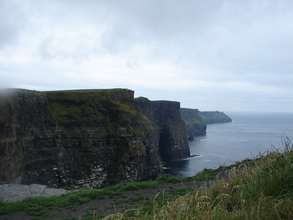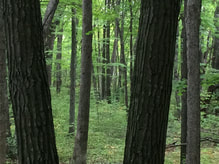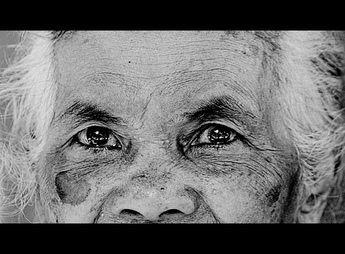When I was considering this post, I recalled an article with the same title that I had clipped and saved a couple of years ago. The article was a conversation between writer P.L. Travers (author of Mary Poppins) and Laurens van der Post, a man who, from the 1940s through 1980s, was known as a best-selling author, environmentalist, and advisor to heads of state (he was a close friend of Prince Charles and Margaret Thatcher). However, after his death in 1996 his reputation was questioned when some biographers suggested he might have embellished (others say “made up”) much of his own story.
The Truth Be Told
For van der Post, the real truth may still be undiscovered, but it made me wonder, where is the truth in our stories? When do we move from nonfiction to creative nonfiction? I’m sure we all come across clients that present challenges to our fact checking. A potential client once told me that capturing the story of her sister would be most difficult because she no longer knows what is true and what isn’t. Working with the elderly, I move from those whose memories are fading or lost to those filled with more memories than we can capture. I call this continuum “From Memories Lost to Memory Filled.” Sometimes our writing expertise is called into play to fill in the blanks and embellish for historical significance and readability.
In the article, P.L. Travers asked Van der Post, “Where do the stories go?” He responded that we “can’t ask what we can do to get them back but know only that it has to be done.” This statement reinforces our mission.
History Shapers
Experienced personal historians have spent years developing their craft, and they realize that as we listen and capture story in all its forms, we layer our story teller’s story with our own understanding, our view, our time and place.
Even when transcribed verbatim, our own tone and texture can add a layer of perspective. Through no deliberate intention, we either intensify or diminish the lessons learned or the stories told.
Think of the words used by the story teller that can be different from those of the story writer, the chronicler in any medium: terminology that is long gone, cultural phrases, values, and viewpoints. The world lived by the narrator — a world of dust storms, world wars, global depressions—is different from the world of the writer.
Before we can fully answer the question “where do all the stories go,” we must acknowledge that stories journey through many people and places before they settle in, if they ever do. The act of capturing a story is not static. Stories move through us in time. The person who lived the stories and the person the stories are told to, each wear it, live it, own it, and then pass it on. Stories are fluid, like a river, and, as a recent client described his fishing expeditions, we “catch and release” the stories told to us.
The Value of Story in the Future
Many of us hear that today’s children are not interested in stories of their ancestors. My response is always “Give them time, but be ready when they are.” Like an internal clock, come mid-40s or early 50s, once other life demands have settled, an individual’s need for answers surfaces.
P.L. Travers suggests that our offspring don’t see the value of story, “having become disconnected to its value [like their disconnect to the earth]. Lacking the extended family, separated from the tribe, and therefore from the stories, what [do] they have to lean upon. Already the stories are becoming unavailable to those who need them most.”
There is the key. It is our job to make the stories available.
There is strength in reminiscing, the coming to terms with our earlier selves. Remember the scene in Mary Poppins when out of an “empty” carpet bag, Mary pulls out all sorts of everyday magical items? What can we find if we look back and in to our past?
My favorite example of reaching back to bring history forward is portrayed in Steven Spielberg’s 1997 film Amistad, based on the 1839 true story of 53 illegally purchased African slaves, being transported from Cuba to the U.S., who stage a successful mutiny. Former president John Quincy Adams argued on behalf of the slaves before the U.S. Supreme Court, eventually determining the Africans to be free men. (http://www.history.com/topics/amistad-case ) In the movie, Cinque, the leader of the slave group, assures Adams that they won’t be facing the court alone. Adams agrees, saying they will have right on their side, but Cinque explains what he means: “I meant my ancestors. I will call into the past, far back to the beginning of time, and beg them to come and help me at the judgment. I will reach back and draw them into me. And they must come, for at this moment, I am the whole reason they have existed at all.” (https://cinema-fanatic.com/2014/04/24/movie-quote-of-the-day-amistad-1997-dir-steven-spielberg/)
It is true for all of us: At this moment, we are the reason our ancestors have existed.
Next week, in part 2 of this post, I will look at how our stories are lifelines to the past and present and explore how we can grab on to them.
(End part 1)
The Truth Be Told
For van der Post, the real truth may still be undiscovered, but it made me wonder, where is the truth in our stories? When do we move from nonfiction to creative nonfiction? I’m sure we all come across clients that present challenges to our fact checking. A potential client once told me that capturing the story of her sister would be most difficult because she no longer knows what is true and what isn’t. Working with the elderly, I move from those whose memories are fading or lost to those filled with more memories than we can capture. I call this continuum “From Memories Lost to Memory Filled.” Sometimes our writing expertise is called into play to fill in the blanks and embellish for historical significance and readability.
In the article, P.L. Travers asked Van der Post, “Where do the stories go?” He responded that we “can’t ask what we can do to get them back but know only that it has to be done.” This statement reinforces our mission.
History Shapers
Experienced personal historians have spent years developing their craft, and they realize that as we listen and capture story in all its forms, we layer our story teller’s story with our own understanding, our view, our time and place.
Even when transcribed verbatim, our own tone and texture can add a layer of perspective. Through no deliberate intention, we either intensify or diminish the lessons learned or the stories told.
Think of the words used by the story teller that can be different from those of the story writer, the chronicler in any medium: terminology that is long gone, cultural phrases, values, and viewpoints. The world lived by the narrator — a world of dust storms, world wars, global depressions—is different from the world of the writer.
Before we can fully answer the question “where do all the stories go,” we must acknowledge that stories journey through many people and places before they settle in, if they ever do. The act of capturing a story is not static. Stories move through us in time. The person who lived the stories and the person the stories are told to, each wear it, live it, own it, and then pass it on. Stories are fluid, like a river, and, as a recent client described his fishing expeditions, we “catch and release” the stories told to us.
The Value of Story in the Future
Many of us hear that today’s children are not interested in stories of their ancestors. My response is always “Give them time, but be ready when they are.” Like an internal clock, come mid-40s or early 50s, once other life demands have settled, an individual’s need for answers surfaces.
P.L. Travers suggests that our offspring don’t see the value of story, “having become disconnected to its value [like their disconnect to the earth]. Lacking the extended family, separated from the tribe, and therefore from the stories, what [do] they have to lean upon. Already the stories are becoming unavailable to those who need them most.”
There is the key. It is our job to make the stories available.
There is strength in reminiscing, the coming to terms with our earlier selves. Remember the scene in Mary Poppins when out of an “empty” carpet bag, Mary pulls out all sorts of everyday magical items? What can we find if we look back and in to our past?
My favorite example of reaching back to bring history forward is portrayed in Steven Spielberg’s 1997 film Amistad, based on the 1839 true story of 53 illegally purchased African slaves, being transported from Cuba to the U.S., who stage a successful mutiny. Former president John Quincy Adams argued on behalf of the slaves before the U.S. Supreme Court, eventually determining the Africans to be free men. (http://www.history.com/topics/amistad-case ) In the movie, Cinque, the leader of the slave group, assures Adams that they won’t be facing the court alone. Adams agrees, saying they will have right on their side, but Cinque explains what he means: “I meant my ancestors. I will call into the past, far back to the beginning of time, and beg them to come and help me at the judgment. I will reach back and draw them into me. And they must come, for at this moment, I am the whole reason they have existed at all.” (https://cinema-fanatic.com/2014/04/24/movie-quote-of-the-day-amistad-1997-dir-steven-spielberg/)
It is true for all of us: At this moment, we are the reason our ancestors have existed.
Next week, in part 2 of this post, I will look at how our stories are lifelines to the past and present and explore how we can grab on to them.
(End part 1)







